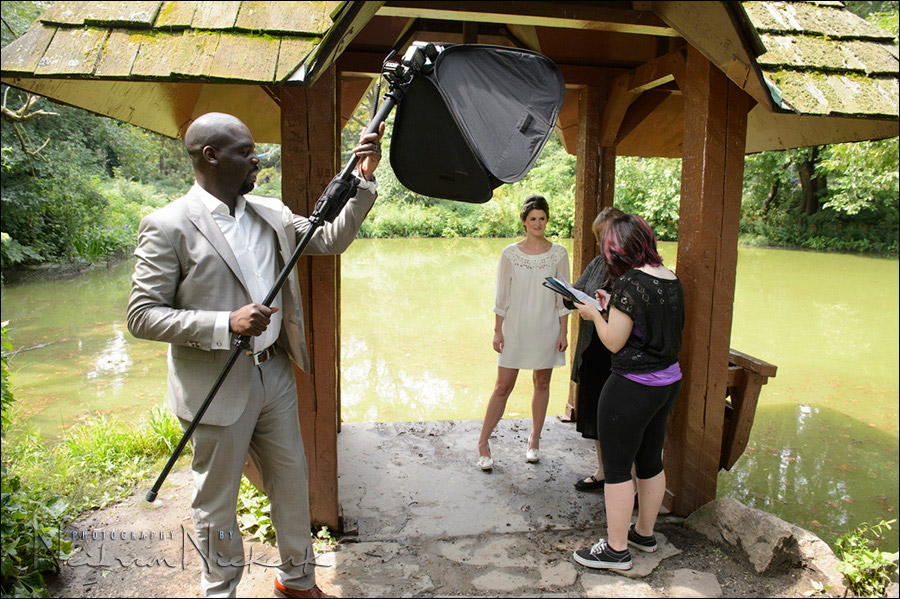
A wedding in Central Park, New York
A groom holding up the softbox for me … as you may well guess, there’s a story here. Alvin and Lucia are from the UK, but decided to get married in Central Park. Of course, there’s a story here too.

Lucia told me their story, and how it took a meandering course until this point, where they ended up getting married in New York, even though they are from the UK.
Central Park elopement wedding photos
Alvin is an avid follower of the Tangents blog, and decided he’d like to have me photograph their wedding ceremony at Wagners Cove in Central Park. Since it would be a very intimate little ceremony with just the two of them, they asked me if I’d like to sign the wedding documents as the witness. Of course! I was hugely flattered already that they’d chosen me to be their photographer, and being the witness would be an honor indeed.
I knew that for the portrait session in the Park afterwards, my life would be much easier (and the photographs look better), if I had off-camera lighting with me. But I didn’t want to invite an assistant along that would be a stranger in such a small group. So I asked my daughter, Janine, to assist me. Good idea, because Alvin already knew who she was from my posts here. His first words to her when we met at the hotel before-hand, was, “How was your trip to Amsterdam?”
The photo at the top is when Janine was asked to sign as second witness, and Alvin offered to hold the softbox up! The rest of the photos here is a selection of my favorite images on the day. In the spirit of the Tangents blog being more techie-oriented, there’s mention of the camera settings and such, as well as the lighting.
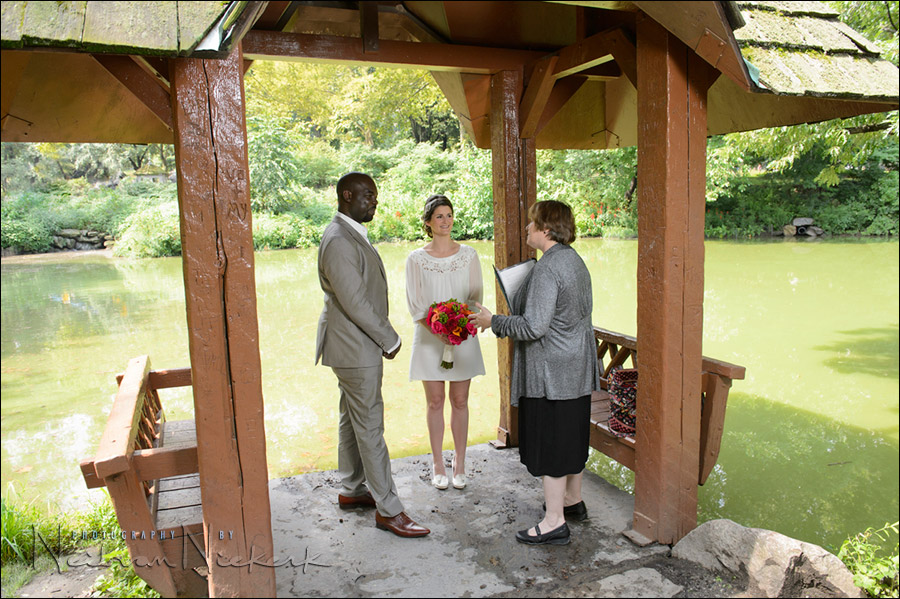
camera settings: 1/250 @ f/5.6 @ 800 ISO
off-camera flash with softbox; controlled as manual flash
Nikon 24-70mm f/2.8G @ 28mm
The ceremony at the edge of the pond was under this gazebo. That would place Alvin and Lucia in deep shade against the brighter lit background. Trouble. Therefore I quickly assembled the Lastolite softbox. I wanted consistent flash exposure, so I set the flash (via the PocketWizard TT5 units), to be manual flash. I asked Janine to keep to a specific distance from them, even when I indicated she had to move to another point. So even when I had the light come from my left or right side, it would be the same exposure.
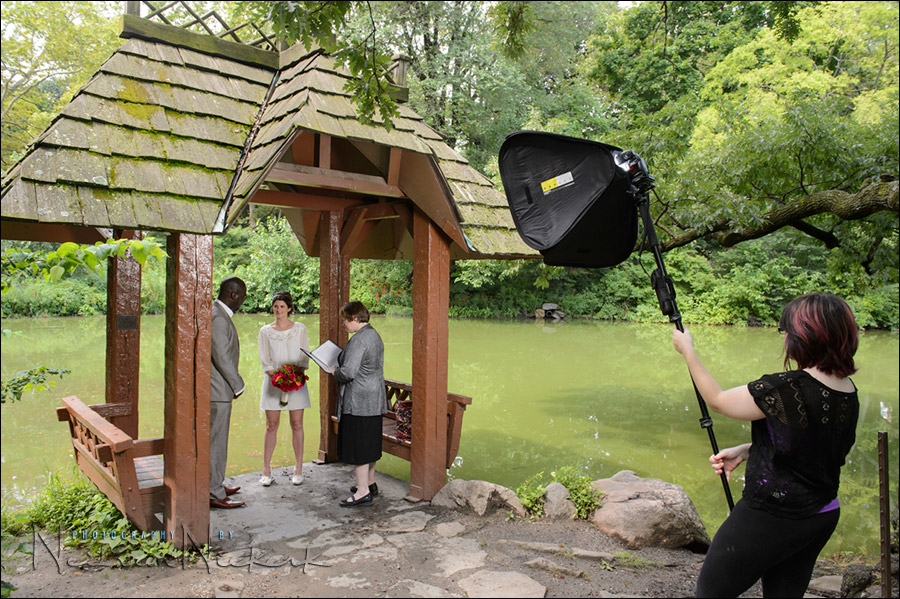
Here is the comparison photo without the additional lighting.
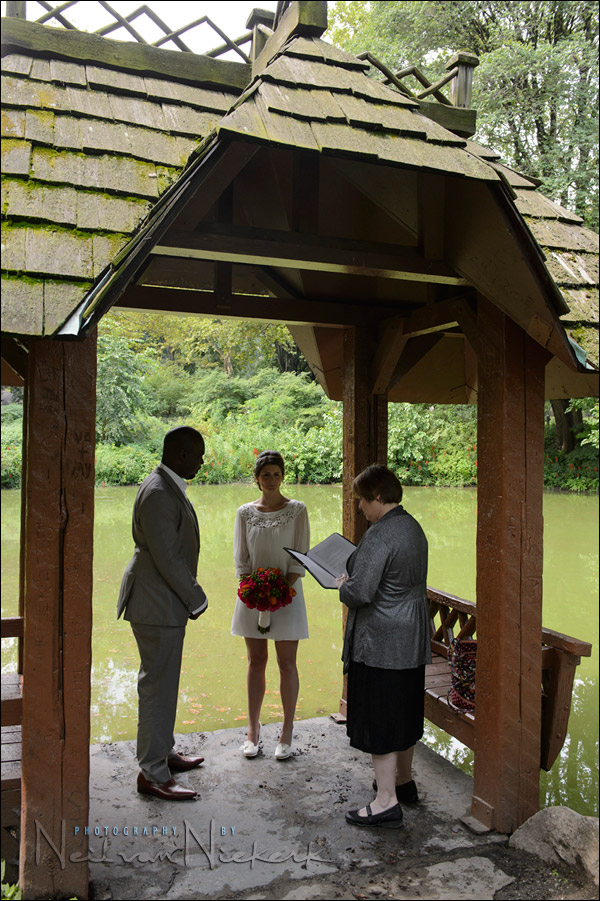
So you may well think it is odd to have an off-camera softbox at this event, but the lighting looks good!
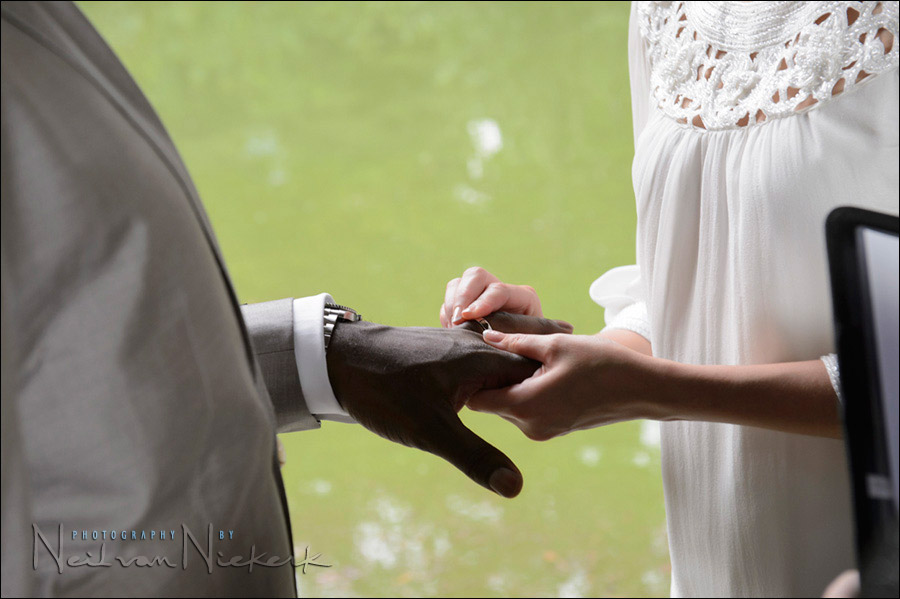
- camera settings: 1/250 @ f/5.6 @ 800 ISO
- off-camera flash with softbox; controlled as manual flash
- Nikon 24-70mm f/2.8G @ 70mm
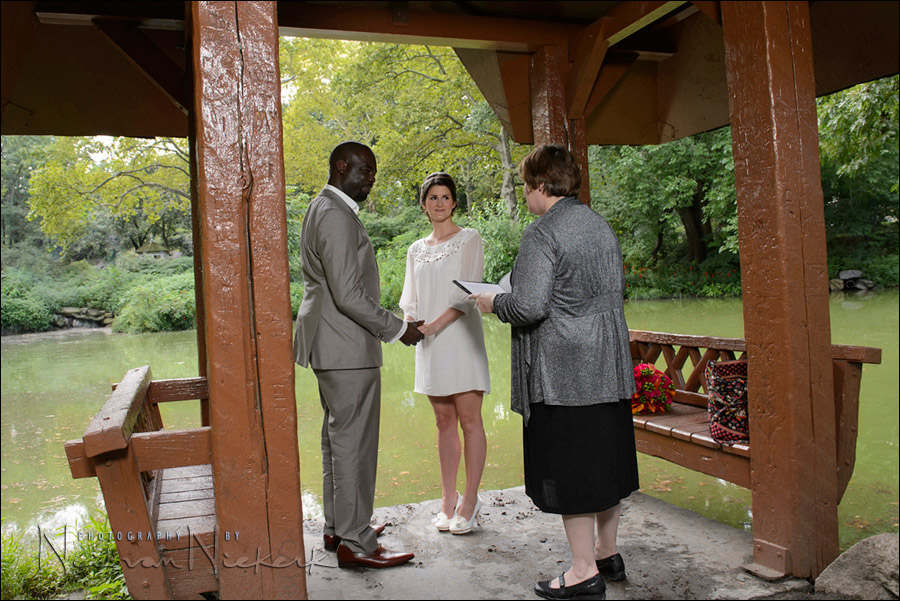
camera settings: 1/250 @ f/5.6 @ 800 ISO
off-camera flash with softbox; controlled as manual flash
Nikon 24-70mm f/2.8G @ 24mm
It also meant we were set up for the portraits there directly after the short ceremony ended.
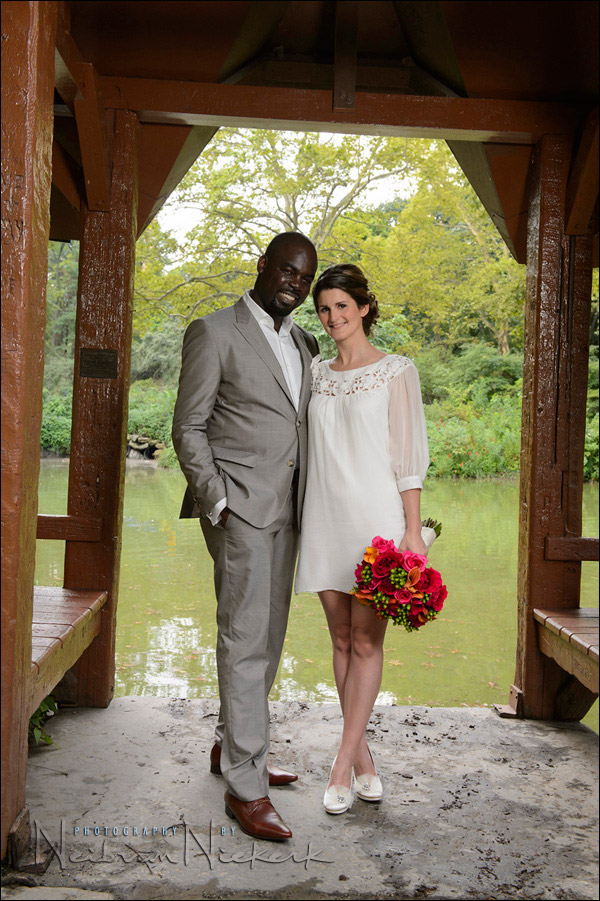
camera settings: 1/250 @ f/5.6 @ 800 ISO
off-camera flash with softbox; controlled as manual flash
Nikon 24-70mm f/2.8G @ 35mm
Afterwards we roamed through the adjacent areas in the park. Even for the photos where they are strolling towards the camera, I had Janine walk with the softbox. Since my settings would change now as we moved, and because the distance would also change, it was easier for me to switch to TTL flash.

camera settings: 1/250 @ f/5.6 @ 800 ISO
off-camera flash with softbox; controlled as TTL flash
Nikon 24-70mm f/2.8G @ 24mm
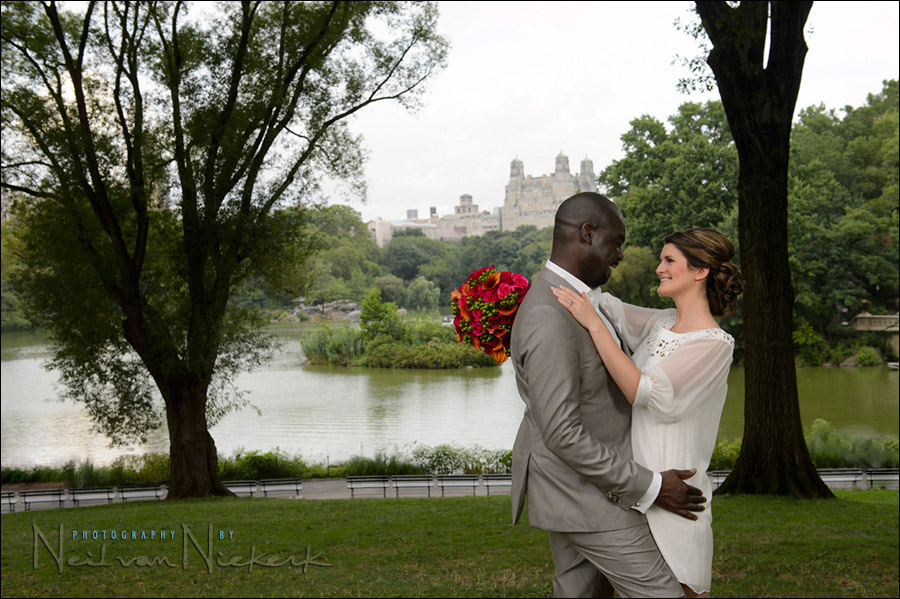
camera settings: 1/250 @ f/5.6 @ 400 ISO
off-camera flash with softbox; controlled as TTL flash
Nikon 24-70mm f/2.8G @ 45mm

camera settings: 1/250 @ f/4.0 @ 400 ISO
off-camera flash with softbox; controlled as TTL flash
Nikon 24-70mm f/2.8G @ 28mm
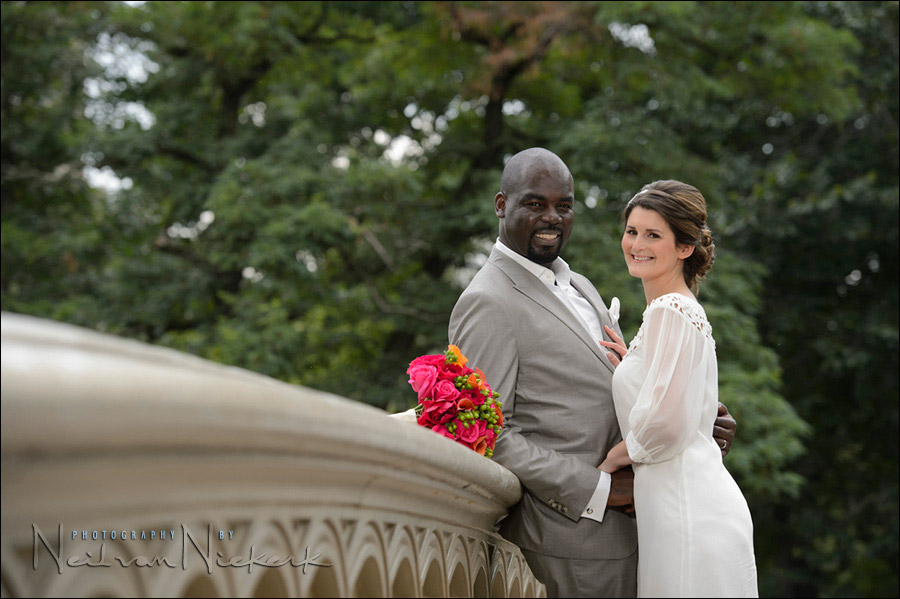
camera settings: 1/250 @ f/4.5 @ 200 ISO
off-camera flash with softbox; controlled as manual flash
Nikon 70-200mm f/2.8 VR II @ 120mm
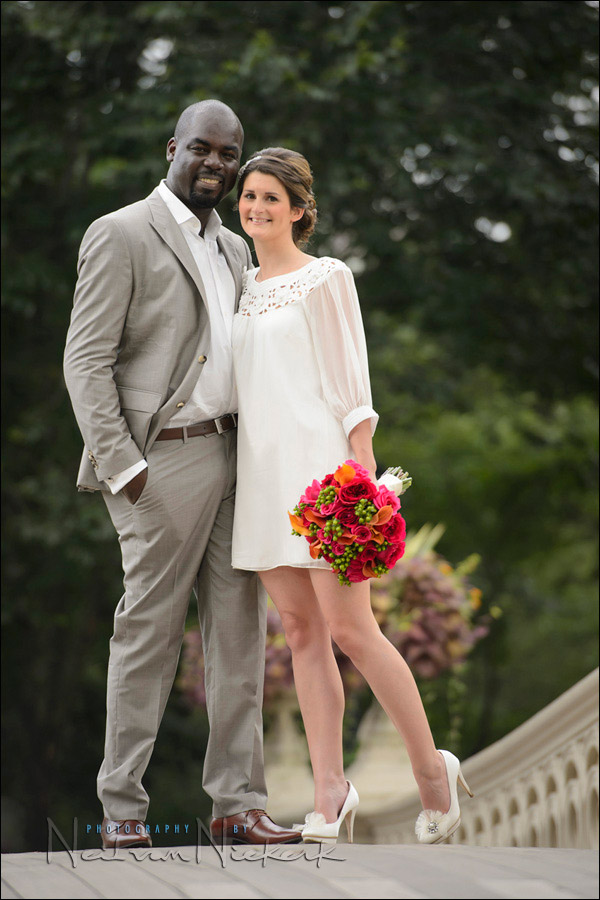
camera settings: 1/250 @ f/4.0 @ 200 ISO
off-camera flash with softbox; controlled as manual flash
Nikon 70-200mm f/2.8 VR II @ 200mm

camera settings: 1/250 @ f/4.0 @ 200 ISO
off-camera flash with softbox; controlled as manual flash
Nikon 70-200mm f/2.8 VR II @ 125mm
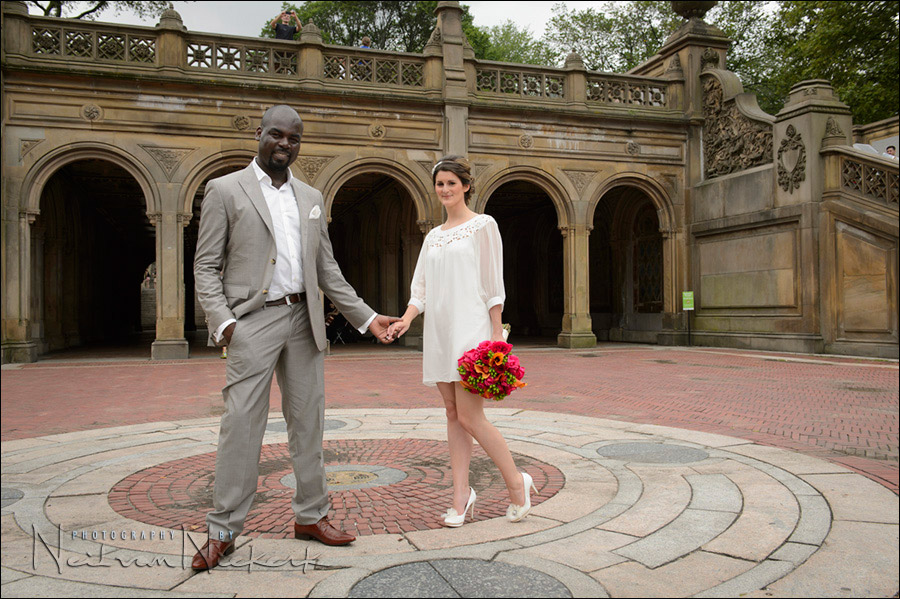
camera settings: 1/250 @ f/5.6 @ 400 ISO
off-camera flash with softbox; flash controlled as TTL flash
Nikon 24-70mm f/2.8G @ 32mm
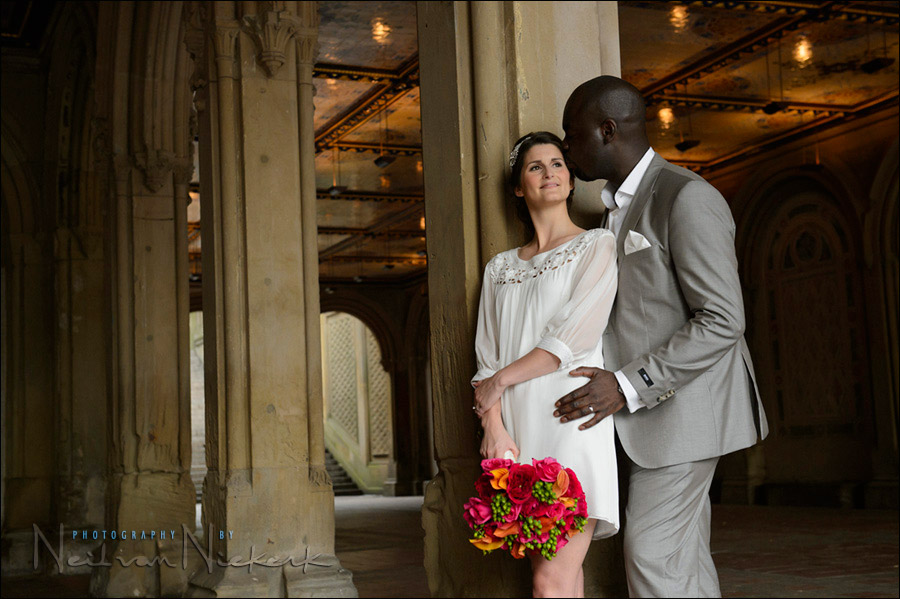
camera settings: 1/250 @ f/4.0 @ 1600 ISO
available light only, coming from camera-right
Nikon 24-70mm f/2.8G @ 50mm
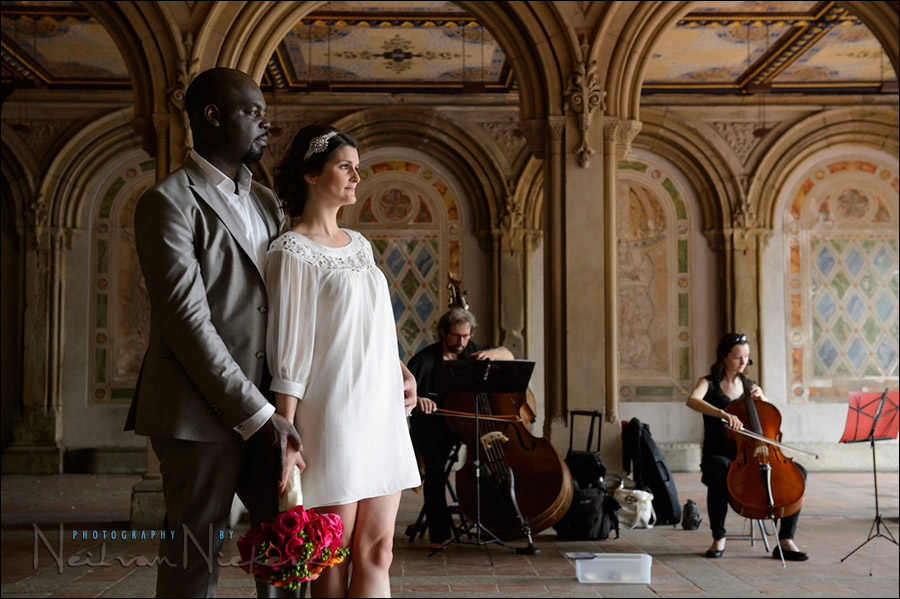
camera settings: 1/160 @ f/4.0 @ 1600 ISO
available light only, coming from camera-right
Nikon 24-70mm f/2.8G @ 50mm
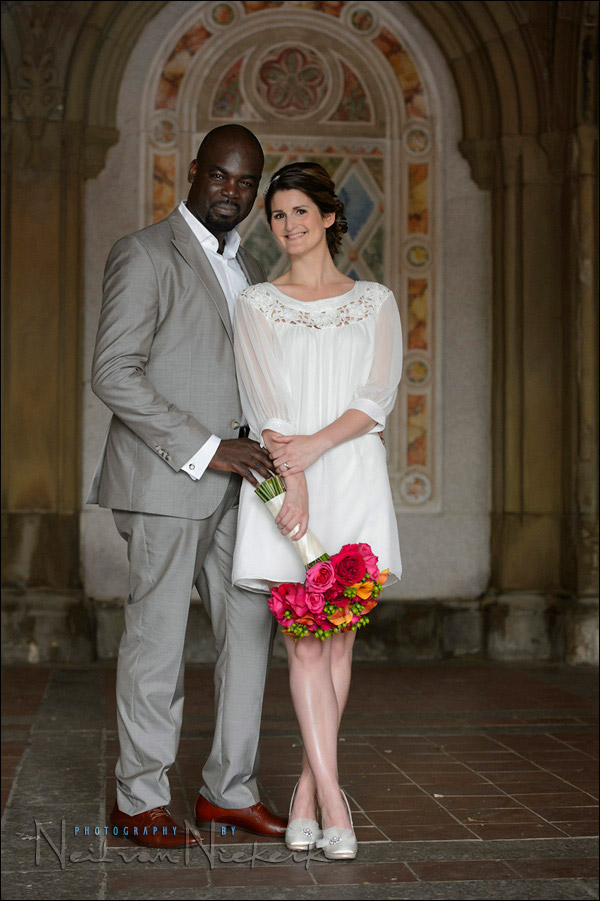
camera settings: 1/200 @ f/3.5 @ 1600 ISO
available light only, coming from behind the camera
Nikon 70-200mm f/2.8 VR II @ 70mm
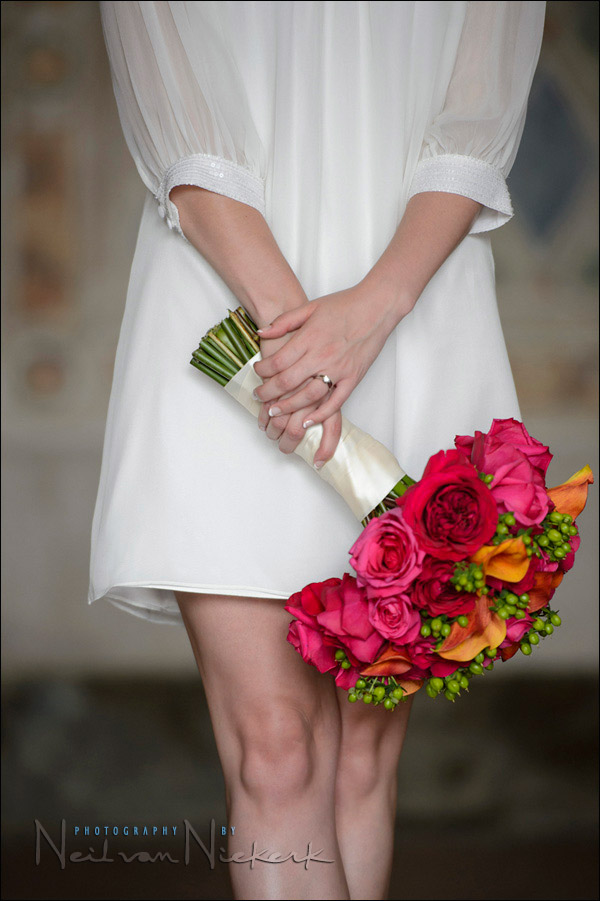
camera settings: 1/200 @ f/3.2 @ 1250 ISO
available light only, coming from behind the camera
Nikon 70-200mm f/2.8 VR II @ 200mm
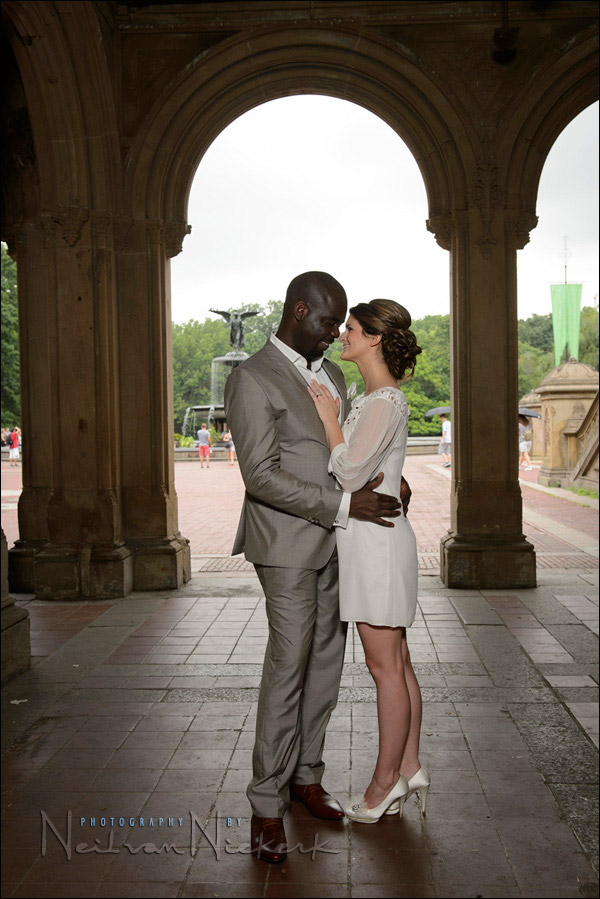
camera settings: 1/250 @ f/5.0 @ 800 ISO
off-camera flash with softbox; controlled as manual flash
Nikon 24-70mm f/2.8G @ 40mm

camera settings: 1/250 @ f/4.0 @ 400 ISO
off-camera flash with softbox; controlled as manual flash
Nikon 70-200mm f/2.8 VR II @ 125mm

camera settings: 1/250 @ f/4.0 @ 400 ISO
off-camera flash with softbox; controlled as manual flash
Nikon 70-200mm f/2.8 VR II @ 105mm

camera settings: 1/250 @ f/4.0 @ 400 ISO
off-camera flash with softbox; controlled as manual flash
Nikon 70-200mm f/2.8 VR II @ 100mm
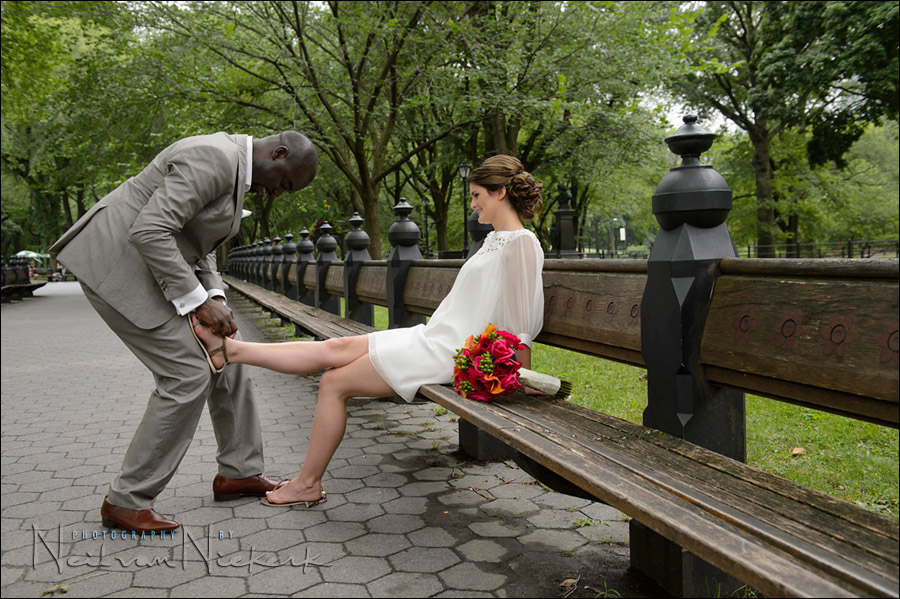
camera settings: 1/250 @ f/5.0 @ 500 ISO
off-camera flash with softbox; flash controlled as TTL flash
Nikon 24-70mm f/2.8G @ 35mm
As we were about to leave the Park, Lucia changed from the heels into more comfortable shoes. It made for a cute moment.

camera settings: 1/80 @ f/4.0 @ 1600 ISO … available light only
Nikon 24-70mm f/2.8G @ 24mm
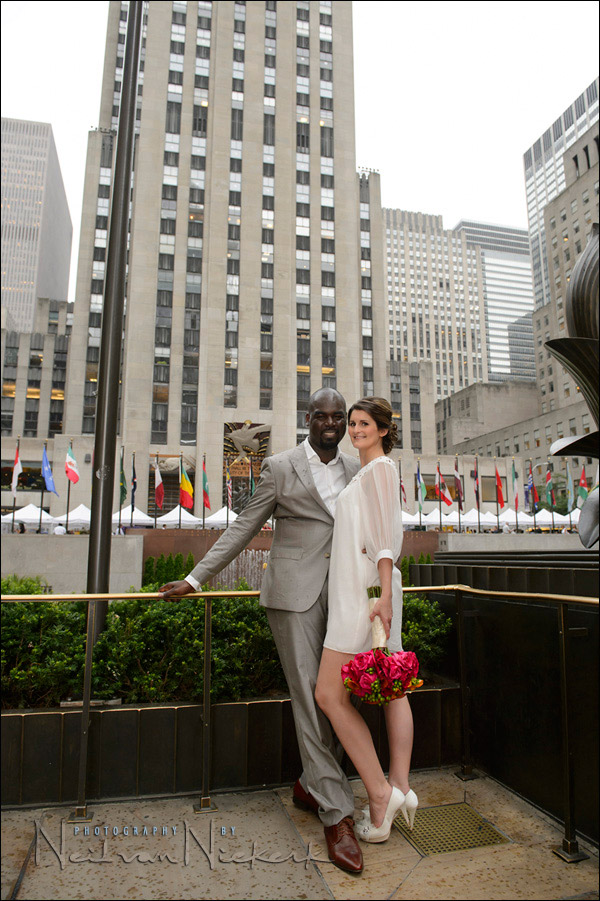
camera settings: 1/250 @ f/4.5 @ 800 ISO
on-camera TTL bounce flash; flash bounced off building behind me
Nikon 24-70mm f/2.8G @ 24mm
I knew that security at the Rockefeller Plaza would be on top of us immediately if I used the softbox. So it was folded away, and I just used on-camera bounce flash for light here. I bounced my flash off the building facade directly behind me. (Sorry, no pull-back shot since it was raining at this point.)
Here is the comparison image without flash.
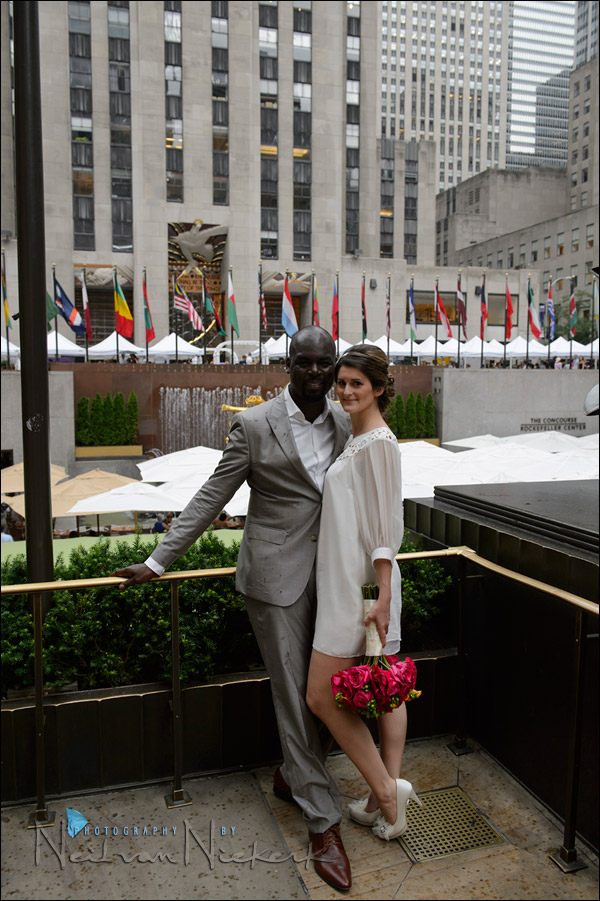
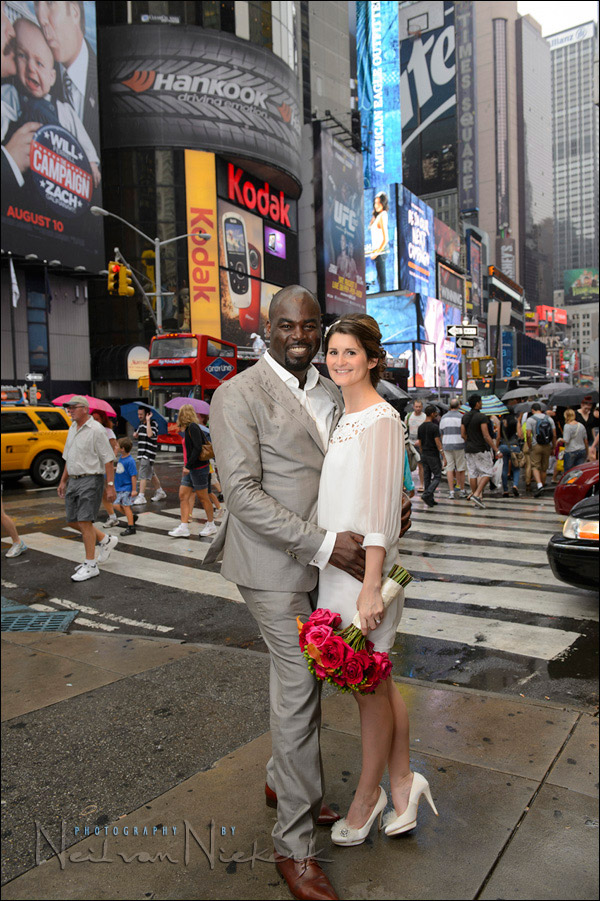
camera settings: 1/250 @ f/4.5 @ 800 ISO
on-camera TTL bounce flash, with flash bounced off pillar behind me
Nikon 24-70mm f/2.8G @ 30mm
By the time we got to Times Square, the rain wasn’t a drizzle anymore. I set Alvin and Lucia up under a building overhang. Working with such a tight space, and with that many people scurrying around, a softbox would’ve been impractical. So I simply bounced my flash off the metallic pillar behind me. (Here’s an iPhone shot of where I had positioned myself.)
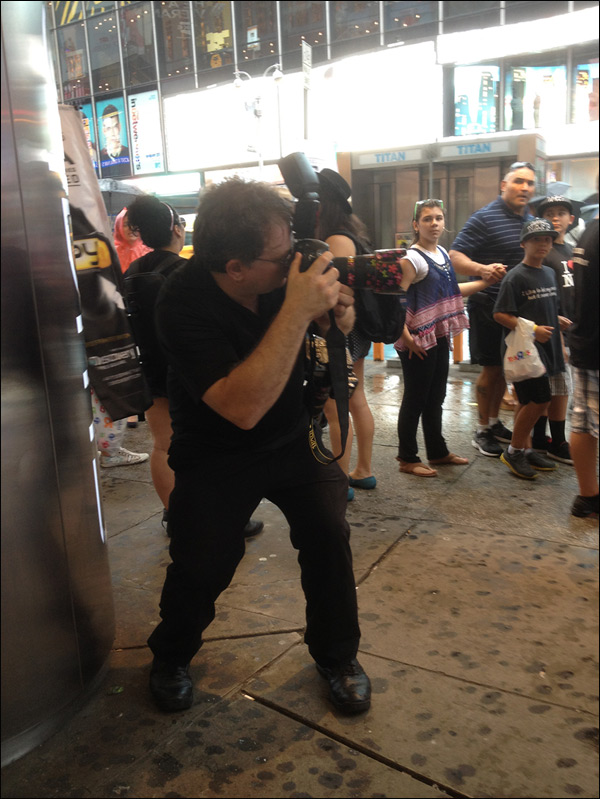
And a comparison image without flash. The bounce flash definitely had an effect here.

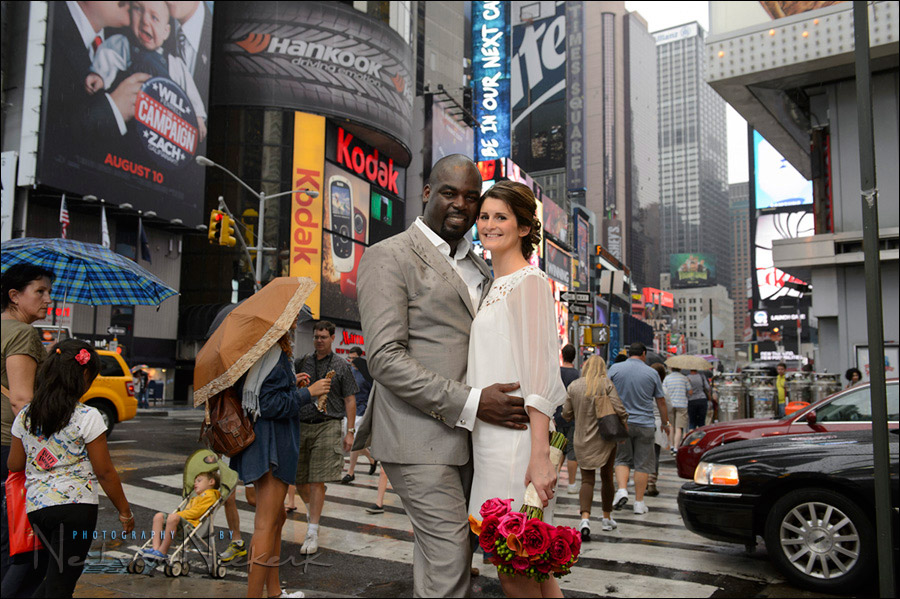
camera settings: 1/250 @ f/4.5 @ 800 ISO
on-camera TTL bounce flash, with flash bounced off pillar behind me
Nikon 24-70mm f/2.8G @ 30mm
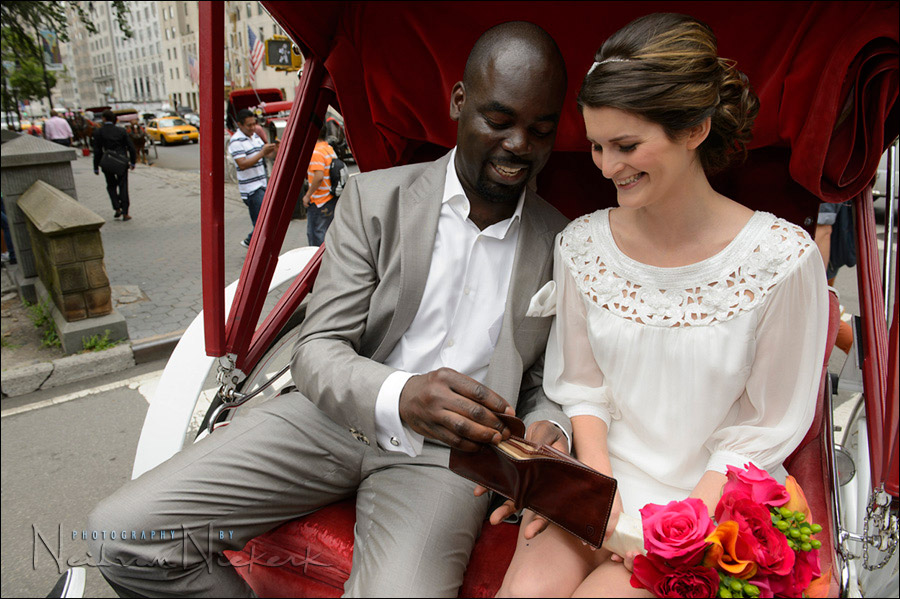
camera settings: 1/320 @ f/5.6 @ 500 ISO
on-camera TTL flash; FEC set to -3EV
Nikon D4 (B&H); Nikon 24-70mm f2.8G ED AF-S (B&H); @ 24mm
On the way to the ceremony, I was in the horse-drawn carriage with Alvin and Lucia. I have to explain this photograph – Alvin was showing Lucia their wedding rings that he kept safely in his wallet.
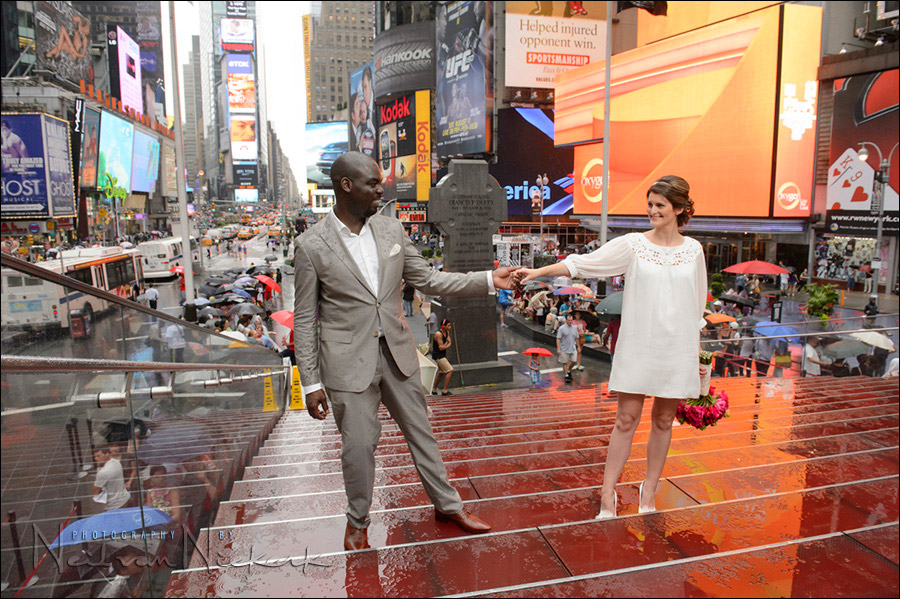
camera settings: 1/250 @ f/5.6 @ 800 ISO
off-camera flash with softbox; flash controlled as TTL flash
Nikon 24-70mm f/2.8G @ 24mm

camera settings: 1/250 @ f/5.6 @ 800 ISO
off-camera flash with softbox; flash controlled as TTL flash
Nikon 70-200mm f/2.8 VR II @ 85mm
With this article, I wanted to show how the on-location lighting technique should be flexible, and not be focused on only one way of doing things.
Finally … Alvin and Lucia, it was a real pleasure meeting you, and a great honor indeed that you’d have me as your photographer on this day.
Photo gear (or equivalents) used during this Central Park wedding
- Nikon D4 – I carry two bodies with me, each with a lens:
- Nikon 24-70mm f/2.8G / Canon 24-70mm f/2.8L II
- Nikon 70-200mm f/2.8 VR II / Canon EF 70-200mm f/2.8L IS II
Even though I have a full range of lenses, including fast primes, my workhorse lenses are those two zooms. They are razor-sharp and with those two lenses, I have the entire range of focal lengths I would need, while still remaining mobile.
Lighting: As you can see from some of the photos, I used the Lastolite EZYBOX 24×24? softbox for off-camera flash. But I didn’t rely exclusively on off-camera flash with the softbox. There were times when the available light was great, and there were times when on-camera bounce flash was a better solution. Direct on-camera flash as fill-flash was the practical option at some point.
- Lastolite EZYBOX 24×24? softbox
- Nikon SB-910 Speedlight controlled by PocketWizard FlexTT5 & AC3 Controller
or alternately, the Canon 600EX-RT Speedlite controlled by Canon ST-E3 Transmitter
Related articles
- Alvin & Lucia – their wedding in Central Park, NYC
- Adapting your photographic style during a photo session
- New York City elopement wedding photography
Neil that’s a lovely story! Great images and the explanations and before/after images are very useful indeed.
Wonderful story. Beautiful couple/ Warms the heart, and we learn a little lighting on the side. Thanks for sharing it.
And they both look so darn trim!
Great Shots neil, congrats!!!
How about your flash? What potency? Full 1/8, 1/16 ???? Thank you and congrats again!!
Harvey, I never take note of the manual flash’s actual output. (Unless I am at full output perhaps.)
It just isn’t of much interest or consequence to me, since the softbox (and baffles) will affect the actual output. And without the distance info, the numerical value of the manual flash has little meaning.
That said, from experience, I know what my flash+softbox combination will give me for an approximate distance. This way I don’t have to wildly experiment with settings … I’m already close to where I need to be.
Neil
Brilliant story, great shots and descriptions as usual. if I ever get married again, and travel from here in the UK to New York, I too would employ your services :)
Quick question, not wanting to get hung up on some of the technical choices but, is there a reason or two that you could give as to why you chose manual flash over TTL for the static scenes i.e. registry signing? Many Thanks
Manual flash vs TTL flash.
Manual flash is consistent, and is controlled by:
aperture / ISO / distance / power
The moment when aperture & ISO stays the same (because available light doesn’t change), and there is a fixed distance involved, then manual flash makes the most sense. (TTL flash exposure often change with a change in composition.)
When we were on the movie, the available light changed, and the distance between the flash and subjects changed … then TTL flash was easiest to use.
lovely pictures Neil…but there is something i dont understand concerning the pictures under the gazebo…….why u used high ISO 800 in such pictures??…it was daylight right??…the background exposure was such low to use this high ISO???… i feel that it was somehow sunny … please i need t know why..thanks
Sam … a couple of things about the choice of ISO:
1. I like working at maximum flash sync speed. It’s the sweet spot when we use flash with bright ambient light. It’s the point at which our flash works the least hard in balancing shade with the brighter areas.
1/250th also means I have less risk of camera shake, or blur from subject movement, than I would at lower shutter speeds.
So maximum flash sync speed makes a lot of sense.
I also wanted enough depth-of-field. f5.6 is fairly safe.
The day was overcast, but the light was quite bright. But it was still overcast. So with my choice of shutter speed and aperture, I had to find the equivalent ISO … and that was 800 ISO.
800 ISO isn’t a particularly high ISO setting any more. Hasn’t been for a while now. And especially with the Nikon D3s / D4, 800 ISO is a safe ISO setting. No noise to contend with.
Another way to think about choice of ISO – I can fix high-ISO noise in Photoshop, but I can’t fix camera shake in Photoshop. I can’t fix lack of depth-of-field either.
All that considered, I used 800 ISO without hesitation.
If the choice of ISO unnecessarily takes you to small apertures or very high shutter speeds, then you need to reconsider the ISO setting. But in this case, 1//250 @ f5.6 made a lot of sense.
We made it on the Tangents!!!!! (jumps for joy )) )
Neil, I would like to say a big thank you here on the Tangents and on behalf of Lucia, also, for the excellent images that so accurately portrayed our day.
There’s a lot to be said on choosing a photographer for such an important occasion, particularly as there are many outstanding practitioners out there specialising in wedding photography. When you and Janine walked into the hotel foyer I instantly felt as though I knew you both. I felt at ease. Through following your work here, I have been able to develop in my own understanding of photography and in particular off-camera lighting techniques. I have also been able to observe at first hand a consistency in your work that is appealing. So it goes without saying that choosing YOU to be our photographer was ‘right’ in every sense and the fact that you went as far to take into consideration the intimacy of our plans, and therefore to invite Janine to be your assistant, was part of what made our day so very personal. Thank you.
This is such a touching story! Love found, love lost, love rekindled.
Neil continues to demonstrate his versatility in all different environments. NYC is a good training ground for photography.
thanks Neil for your reply….so in case u was using iso 100 then the ambient light would be 1/250 F2…..let me put the question in another way… the exposure u used was the background ambient exposure of the lake and trees >>or it was little overexposed?>>thanks
The exposure for the background changed as the light changed. So when the sun came out, it appeared brighter accordingly. I could live with that. It’s a decision.
Hi Neil
It’s a long time since i asked you a question i just lurk and learn here on the Tangents site. Yet another brilliant article and great romantic story the very best wishes to the happy couple.
I have not invested in pocket wizards (yet) my question is why pocket wizards? instead of using the sb910 in master and another sb800/900/or indeed another sb910 as remote in the softbox, is it to do with distance and power of battery’s? etc
or is it to do with ease of configuration/setting of units?
regards Jamie
Even though most of the examples in my book, Off-Camera Flash was shot just using the camera’s wireless TTL capability, for a shoot like this, I don’t want to be constrained by line-of-sight limitations.
Great post Neil! I think the pw flex is nothing short of brilliant! I would not want to be without it. I admittedly chase a very shallow dof, so I think I would have been sorely tempted to shoot some of these with a wider aperture and cross over to hss territory. I/1000 is nothing for a single sb900.I love the soft backgrounds. Fantastic work!
Try 1/1000 in daylight with a single SB-900 and a softbox?
fabulous photos of a beautiful couple…well done!!!
sam barri, i have struggled with this issue as well for a while, u ask why not slow down the shutter speed a bit and lower the iso, for instance with the gazibo pic why 1/250 at ISO 800? why not choose 1/125 and iso 400? the answer is that the exposure may not be the same as far as flash power(meaning the flash may not have enough power). At iso 800 1/250 the possible power from ur flash is double that of when shooting at ISO 400, 1/125, the reason is b/c flash is only relying on aperture and iso, NOT shutterspeed. so thats why the recipe for outdoor photos in daylight is too go to max sync speed at ur desired aperture at iso 100, after a test shot without flash u can determine by observing the lcd, if the photo is overexposed (Rare) u must close down ur aperture, if the photo is underexposed (most likely depending on ur aperture) raise ur iso till u have the exposure u want then add flash with fec dialed down to the appropriate amount, hope this helps
Neil when you bounced your flash I couldn’t see the Blackfoamie thing on your flash.
You have to consider what the black foamie thing does … and what it doesn’t do.
Absolutely Neil. These photos do not appear to be in bright sunlight. Overcast to heavily overcast. Certainly not overpowering the sun by any means. I am guessing you were under the ambient by 1 stop or so. In my experience with this exact set up 1/1000 is easily achieveable even with a single sb-900.
Congratulations to Alvin & Lucia! You picked the best photographer for the occasion and thanks for allowing Neil to share your photos with us on his Tangents. Some lovely photos and use of flash and Ambient. Some usefull “before and after” photos. Only wish the weather could have been kinder for you both! I returned to the UK from NY 4 wks ago and it was 104degrees there which would have been uncomfortable…
This is an awesome love story. As wedding photographers, we not only have the job of photographing weddings but also to be witnesses and partake in the couples love story. Many blessings to Lucaia & Alvin and to Neil & Janine for capturing their love story. Beautiful work. -:)
Lucia’s brother here. Thank you for capturing some wonderful shots of Lucia ‘s and Alvin’s wedding. And for sharing such complete tech details to sate my nerdy photographer curiosity. Awesome work and some beautiful shots.
Hi Neil,
Many thanks for all your extremely useful posts. I am intruiged that you used a small soft box rather than an umbrella – even for the full length shots. I did notice that the soft box was a fair distance from the subjects. I would also have thought it would have saved flash battery power to use an umbrella closer to the subjects?
Regards Neville
A mounted softbox is much easier to carry around, compared to an open umbrella.
Neil:
Why so many changes in ISO? What determines when to drop fill light in favor of ISO increase or decrease?
BTW, I wish the newlyweds a long and happy marriage.
Richard
Richard … my comment at #8 partially answers your question.
Beautiful photos! I’m just seeing this now and was wondering, for the manual flash shots, what your distance was from the subjects (if you can remember, of course). Also, you say you don’t know what manual flash settings were used, that you don’t pay attention to that… Maybe you just know instinctively what settings will work, given the distance and other ambient determinants. For beginners, it’s not so simple. Do you do a few test shots first? Great work in any case and very inspiring. Thanks for the generously detailed post!
It’s very much as described in this article – under the section named metering for the flash exposure. It is indeed experience – i.e. knowing how the flash and softbox will behave for a certain distance. So after using a certain setup for a long while, you get a really good feel for what the flash exposure would be. And then I do a few test shots beforehand to make sure.
My assistant holding the softbox- in this case my daughter – knows to keep a specific distance from the couple, regardless of my position.
Of course, I shoot in RAW to take up some of the slack in exposure.
Thank you very much, another great telling story